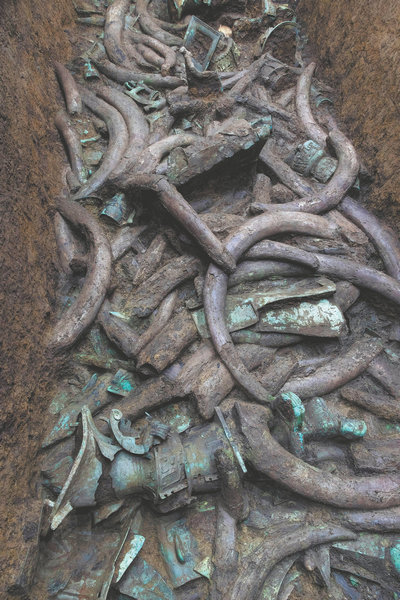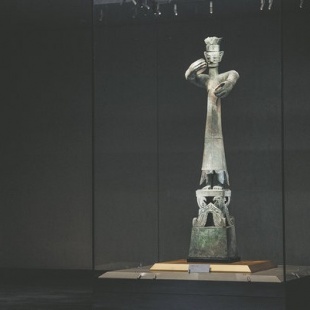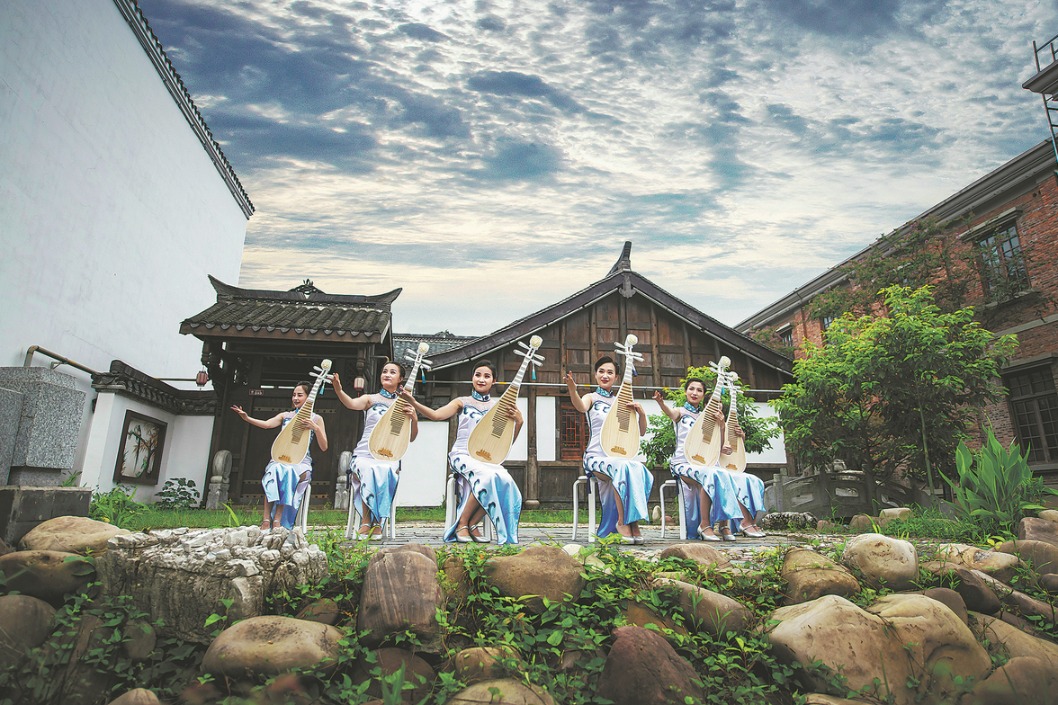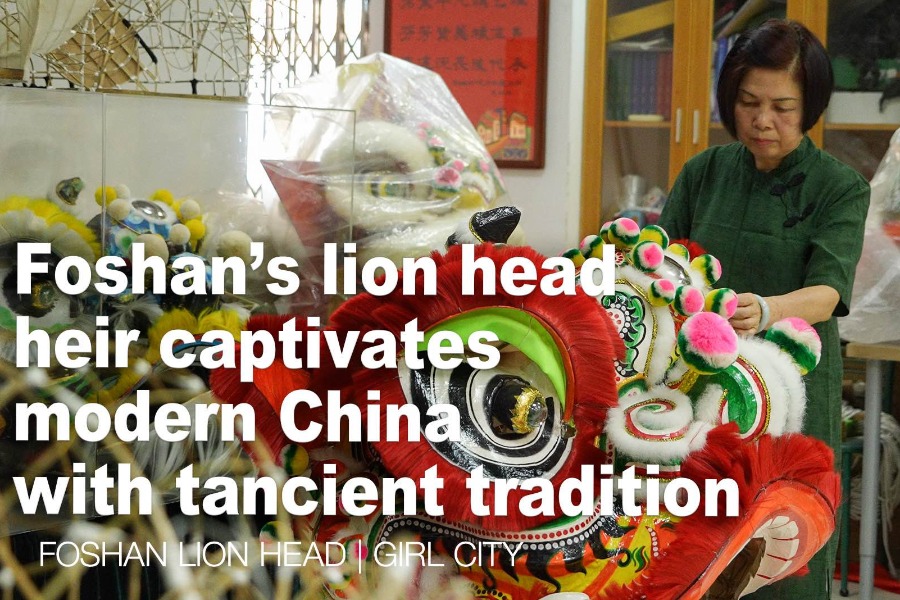A gripping mystery
One of the biggest questions that still confounds Sanxingdui experts is: What did the bronze standing man once hold in his hands? Zhao Xu feels around for answers.


The ritual jadeware
Back in 1986, a kneeling bronze figure holding a forked blade with both hands was unearthed from the site. Despite his missing head, the figure's general posture, most notably his outstretched arms, contains an unmistakable solemnity befitting the atmosphere of a ritual ceremony. The blade constitutes a bronze rendition of a type of ritual jade known as zhang, which was being discovered around the same time in relatively large quantities from the site. "Jade zhang had been offered by the Sanxingdui people as a form of sacrifice to the mountains," says Hu, pointing to one unearthed from the site that bears the repeating pattern of man and mountain, the latter having a forked zhang erected at its foot.
"Given the grand, standing figure's presumed role as a chief priest, it was only natural that he held a piece of ritual jade, zhang for example" says Hu.
Possible candidates also include another type of ritual jade known as cong. A cylindrical tube encased in a square prism, the shape of cong, if it was indeed the missing piece of the puzzle, would have fitted the cavity formed by the man's hands perfectly.
It's interesting to note that the jade cong found at Sanxingdui had, in fact, come from at least two disparate cultural traditions — the Neolithic Liangzhu culture centered on the lower Yangtze River Delta, and the early Bronze Age culture of Qijia, which was mainly distributed around the upper Yellow River region in what is modern-day Gansu province.
"Their coexistence at Sanxingdui suggests that the place, rather than being a backwater, was actually a nexus where multiple influences conflated," says Hu.
"To this potent mixture, the Sanxingdui people had added a spoonful of their own cultural ingredients," he continues, pointing to one particular jade zhang shaped like a fish, in the open mouth of which sits a bird.
"This bird is no average bird, it is a cormorant, or fu in Chinese. The combination of a fish (yu) and a cormorant (fu) spells Yufu, the name of a legendary king that had ruled the kingdom of Shu," says Hu. "The same combination was repeated by the engraved patterns on the gold scepter."





































